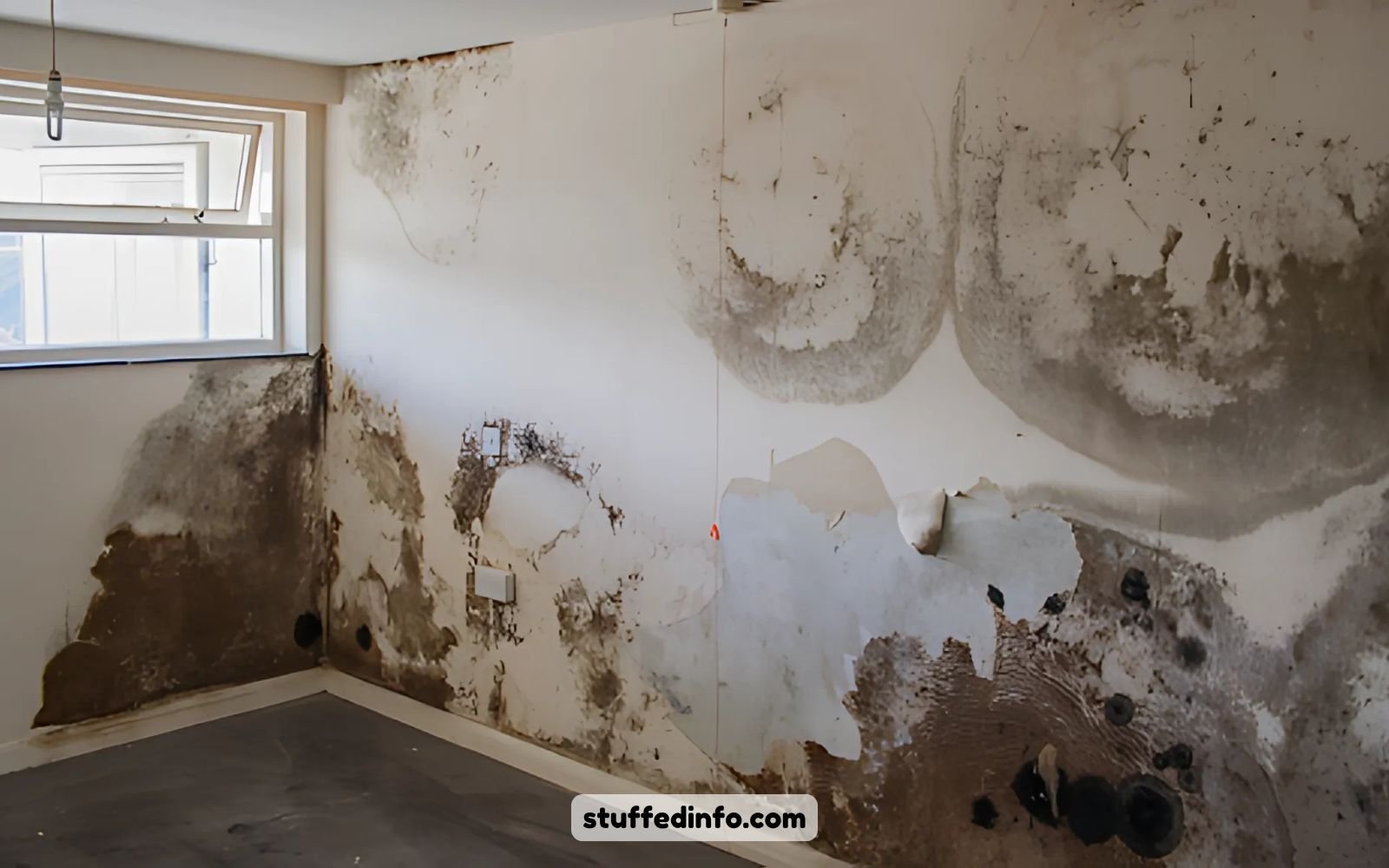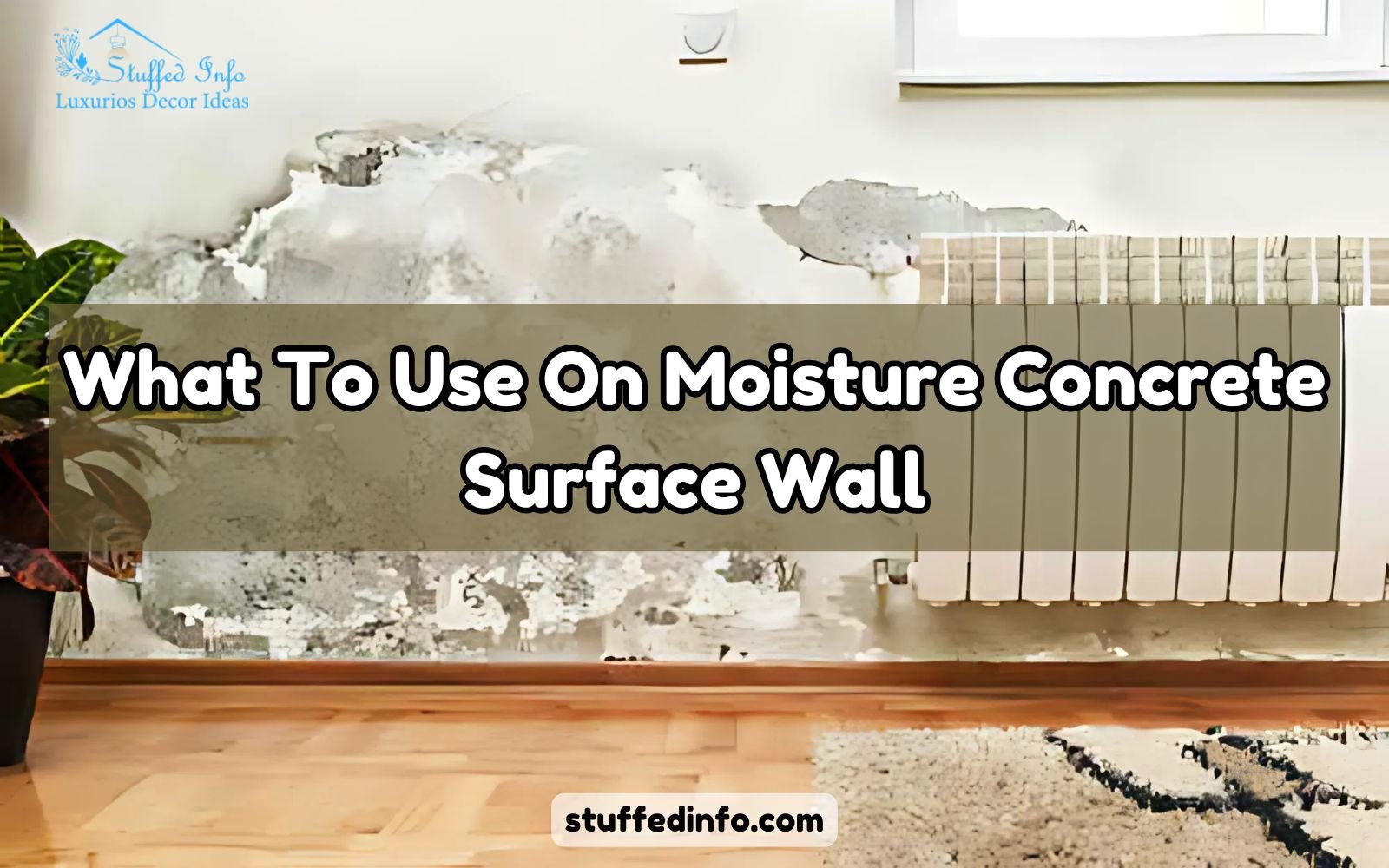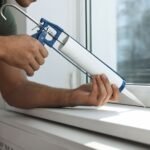Wall dampness is a common problem in many houses and it often happens repeatedly, Thus, it is important for you to widen your knowledge on this so that you can protect your place efficiently. Therefore, to guide you on the same, we are going to answer what to use on moisture concrete surface wall. Hence, it will cover everything from its necessary information, what are the safety measures, to what are the reasons behind this. So, read this article in detail to know everything about wall dampness.
Table of Contents
ToggleWhat Is A Moisture Concrete Surface Wall?
Before learning about what to use on a moisture concrete surface wall, let’s first learn about its meaning and existence. Thus, any wall that exhibits high moisture content due to water infiltration or inadequate drying during the curing process is considered as a moisture concrete. Some major issues such as poor drainage, leaks, or humidity exposure can lead to moisture in concrete surface walls.
However, issues like mold growth, efflorescence (white mineral deposits) or structural weakness can be seen due to excess moisture over the period of time. These surfaces can compromise insulation, lead to deterioration of materials, and affect indoor air quality. Hence they are problematic during the construction. But the main question arises is what to use on moisture concrete surface walls to mitigate these issues? So, in order to deal with these issues a lot of measures are available that can fix them immediately.
What To Use On Moisture Concrete Surface Wall?
The most common question people face is what to use on a moisture concrete surface wall? To properly treat a moisture concrete surface wall, it’s important to apply the right products and techniques to prevent further damage and maintain structural integrity. Here are essential solutions:
- Waterproof Sealants: Applying waterproofing sealants designed can be one of the products to use on moisture concrete surface walls to penetrate the concrete and create a protective barrier against moisture. Thus, these sealants are typically silicon or acrylic based and are effective in reducing water infiltration.
- Moisture Barriers: Installing a moisture barrier or waterproof membrane can be a good option to enhance the wall’s resistance to water. Therefore, basements or exterior walls exposed to consistent moisture particularly benefit from these barriers.
- Concrete Sealers: When it comes to what to use on moisture concrete surface walls? Penetrating sealers, such as silane or siloxane-based products, are highly effective. Hence, they soak into the pores of the concrete and create a water-repellent shield without altering the wall’s appearance.
- Epoxy Coatings: Moreover, for heavy-duty protection, epoxy coatings can be a useful source. Thus, they form a hard, impermeable surface that resists water, abrasion, and chemical exposure, making them ideal for basements or garage walls. One can use epoxy to avoid water leakage.
- Dehumidifiers: Last but not least, in areas prone to high humidity, dehumidifiers can help control the moisture level in the air, preventing condensation and dampness on concrete surfaces.
Note: Clean and dry the wall thoroughly before applying any product to ensure the best adherence and long-lasting results.
Types of Moisture Concrete Surface Wall
Now that we know what to use on moisture concrete surface wall, its high time to learn about the type of wall dampness. Thus, there are multiple types of wall dampness which can manifest in various forms. Thus, depending on dampness the treatment is followed. It is important to understand what kind of wall dampness is there in your home. Here are some common types of wall dampness as follows:
- Rising Damp: This type of Wall Dampness mainly seen in the older building made up of without damp proof courses. Therefore, it generally occurs in old buildings when the groundwater moves upward in walls through capillaries by capillaries action.
- Penetrating Damp: It is another type of Wall Dampness and it occurs when the rainwater or moisture from the exterior comes to the interior of the building. Moreover, it happens due to leakage and poor drainage.
- Condensation Damp: It is one of the common types of dampness. Hence, in this type the warm moist air comes in the contact of cold surfaces and creates water droplets and further leads to damages and wallpaper peeling.
- Lateral Dampness: Last but not least, this type of dampness occurs by the external water pressure horizontally in the walls.

How to Prevent Moisture Concrete Surface Wall?
In the above sections, we talked about what to use on moisture surface walls but now it’s the right time to learn about the prevention measures. Therefore, in order to prevent your home from moisture concrete surface wall here are some important pointers you need to keep in your mind:
- Apply Waterproof Coating: You should apply waterproof coating on your wall because it creates a protective barrier against water absorption in the wall.
- Install Moisture Barriers: Plus, you should install moisture barriers on the exterior side of the wall. To block water infiltration, you should do it. Thus, you can do it in the basement.
- Seal Cracks And Joints: Additionally, you should seal the cracks and joints for the purpose of preventing water leakage. Hence, for this you have to regularly check the cracks.
- Ensure Proper Drainage: It is very important to ensure that your drainage system is effective and if it’s not so you should maintain it properly around your buildings.
- Use Quality Concrete Mix: During the construction of your building, it is highly recommended that you should use a high quality concrete mix which resists water penetration in the wall.
- Improve Ventilation: Besides the above shared tips, you should improve ventilation in your building to prevent condensation wall dampness.
Impact of Wall Dampness
Wall dampness can have some negative impact on the structural integrity of the building and some of the common impact of wall dampness are as follow:
- Wall dampness leads to structural damage by weakening the material and leading cracks on the wall. This will decrease the durability of the building.
- Plus, it will create respiratory problems including allergies.
- Moreover, it will create a very bad and musty smell which makes living in this building very difficult or uncomfortable.
- Wall dampness is the main reason for the peeling of wall wallpaper.
- Additionally, it will create rusting over the metals.
- Furthermore, it will create a damp environment in the building and ensure the growth of fungus.
Conclusion
In this blog post, we briefly answered what to use on moisture concrete surface walls. Therefore, by installing a moisture barrier or seal on cracks, you can avoid any kind of damage, leakage and maintain the durability of the building. Plus, following the precaution and after care steps also helps to maintain a safe environment and ensure good health.
FAQs
What leads to a wall dampness?
Low quality material can easily lead to wall dampness resulting in water leakage, or humidity exposure.
What to use on a moisture concrete surface wall?
One can use Waterproof Sealants, Moisture Barriers, Concrete Sealers, Epoxy Coatings, Dehumidifiers, etc. on a moisture concrete surface wall.
Is wall seepage harmful to one’s home and health?
Yes, wall seepage is harmful for both home and health as it leads to fungus and mold growth.
How do I know if my walls are damp?
Some common signs of wall dampness include easily visible water stains, discolored patches, mold or mildew growth, and cold or wet walls.
Can I paint on a damp wall to hide the damage?
No, you should not paint on a damp wall to hide the damage as it leads to peeling paint and persistent dampness which will later cost you more.







